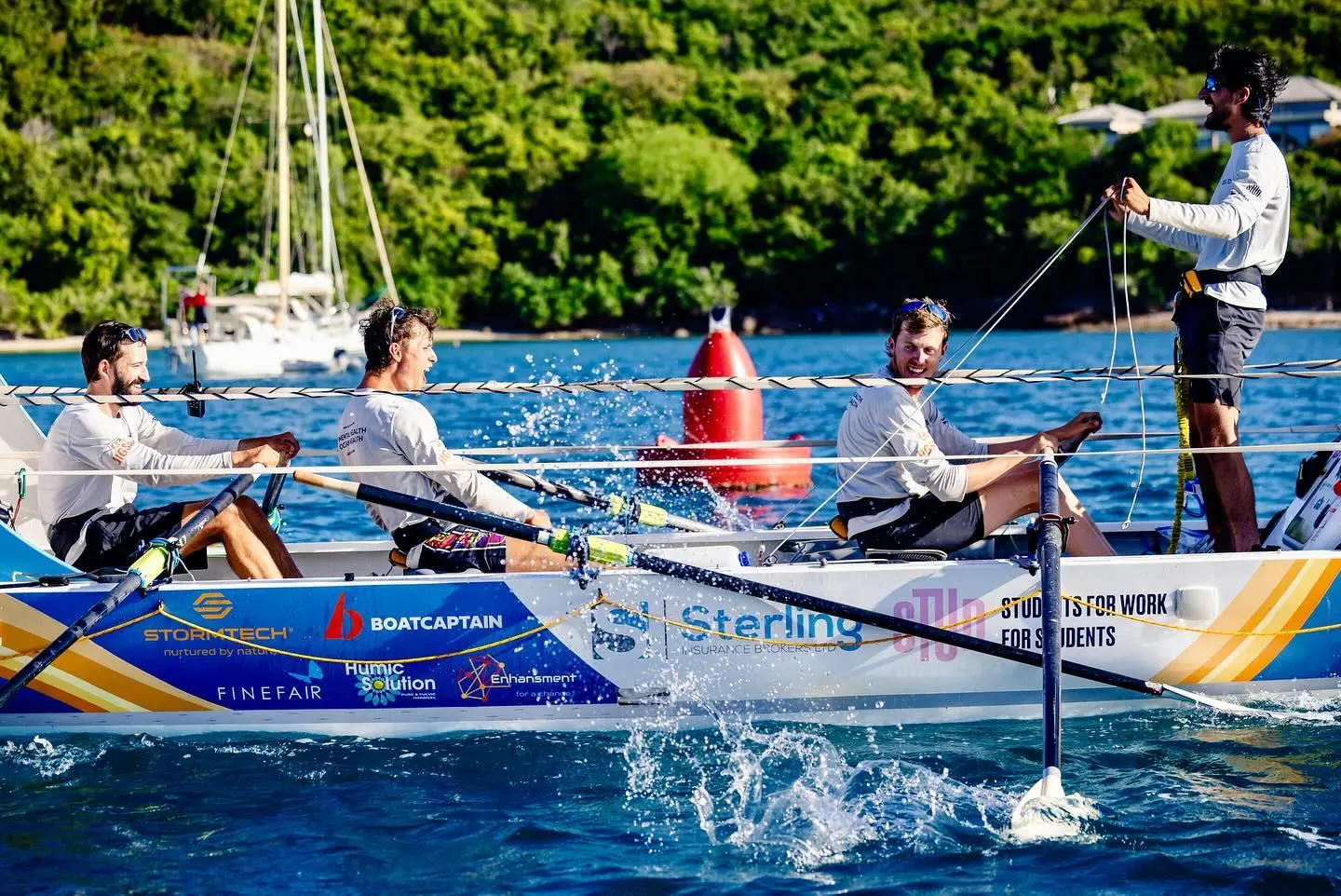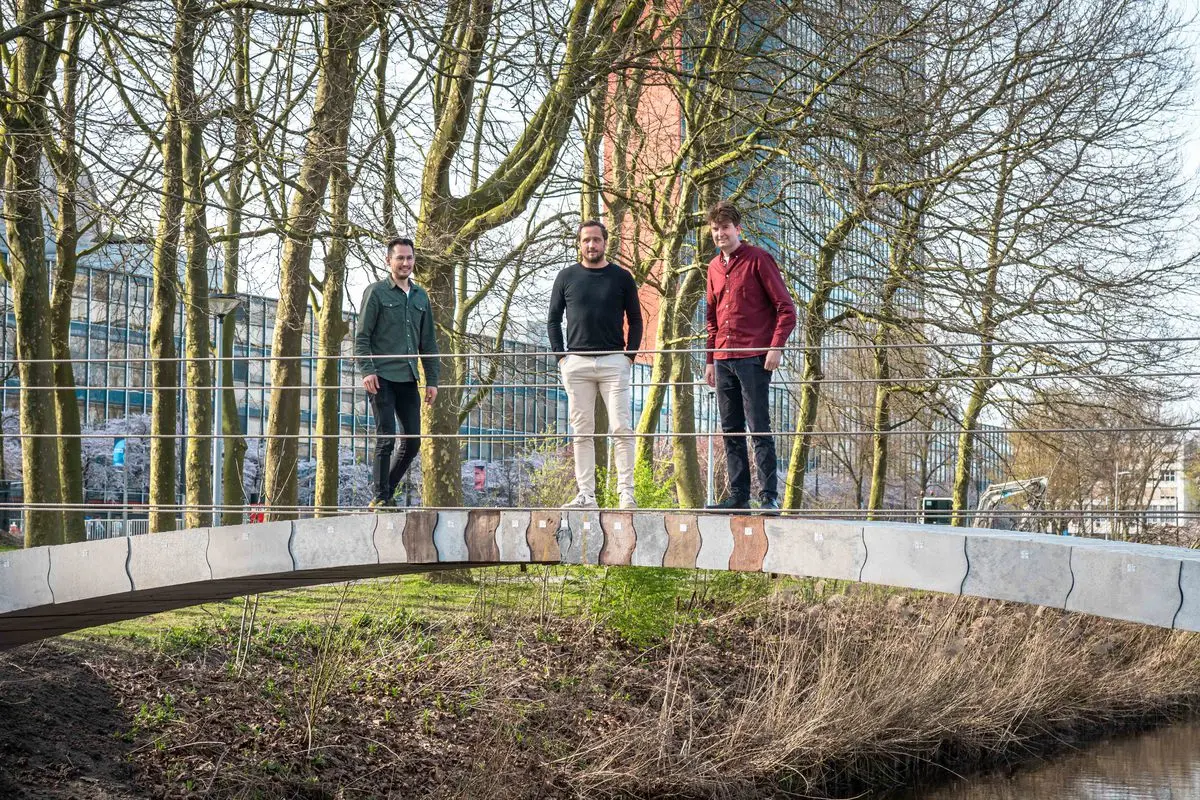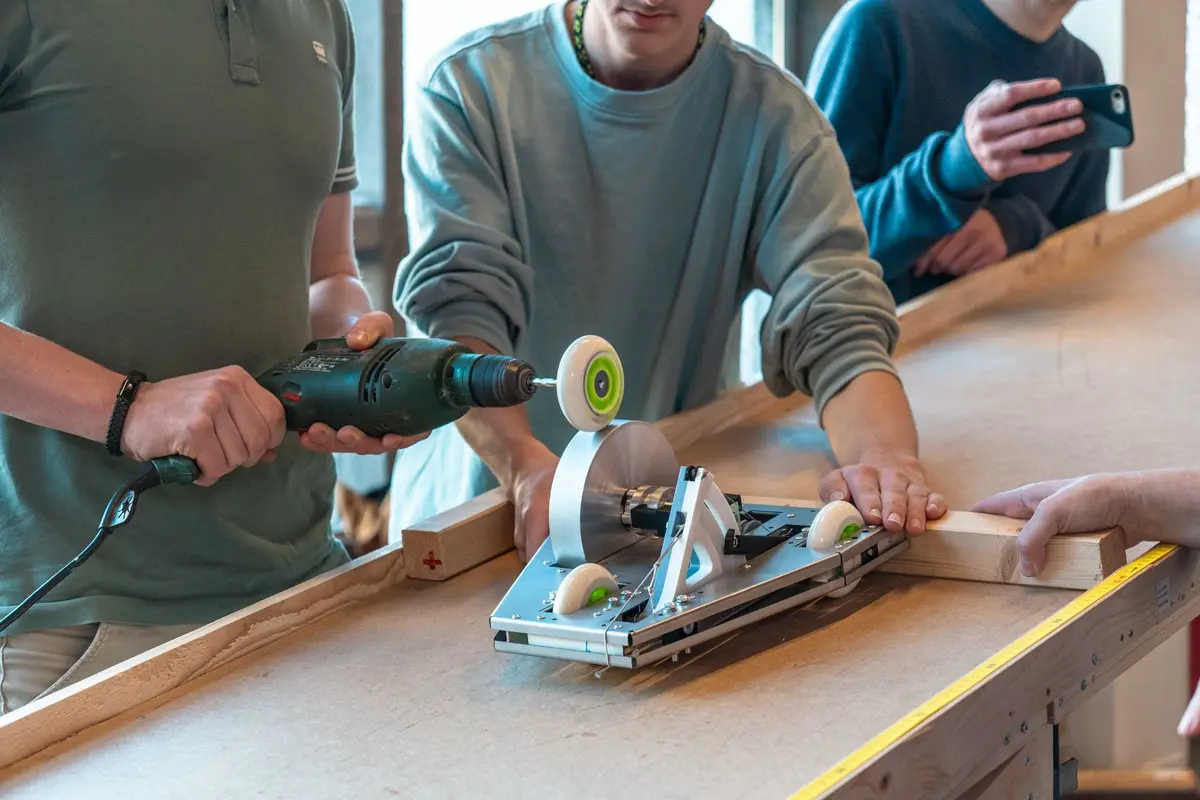Plan for change
In March, the Dutch Inspectorate of Education published a critical report on social safety at TU Delft. It recommended drawing up an improvement plan within three months. On 15 May, the Executive Board presented this change plan to the Education Inspectorate. The supervisory board formally handed it over to minister Dijkgraaf. The plan came about with input, ideas and feedback from students, staff and alumni. Many spoke out, dared to be vulnerable and shared an overwhelming number of ideas. The plan is a starting point for change and certainly not a finish line. It also means keeping in touch with each other and listening to each other. TU Delft will also adapt elements in its current structure, culture and system.
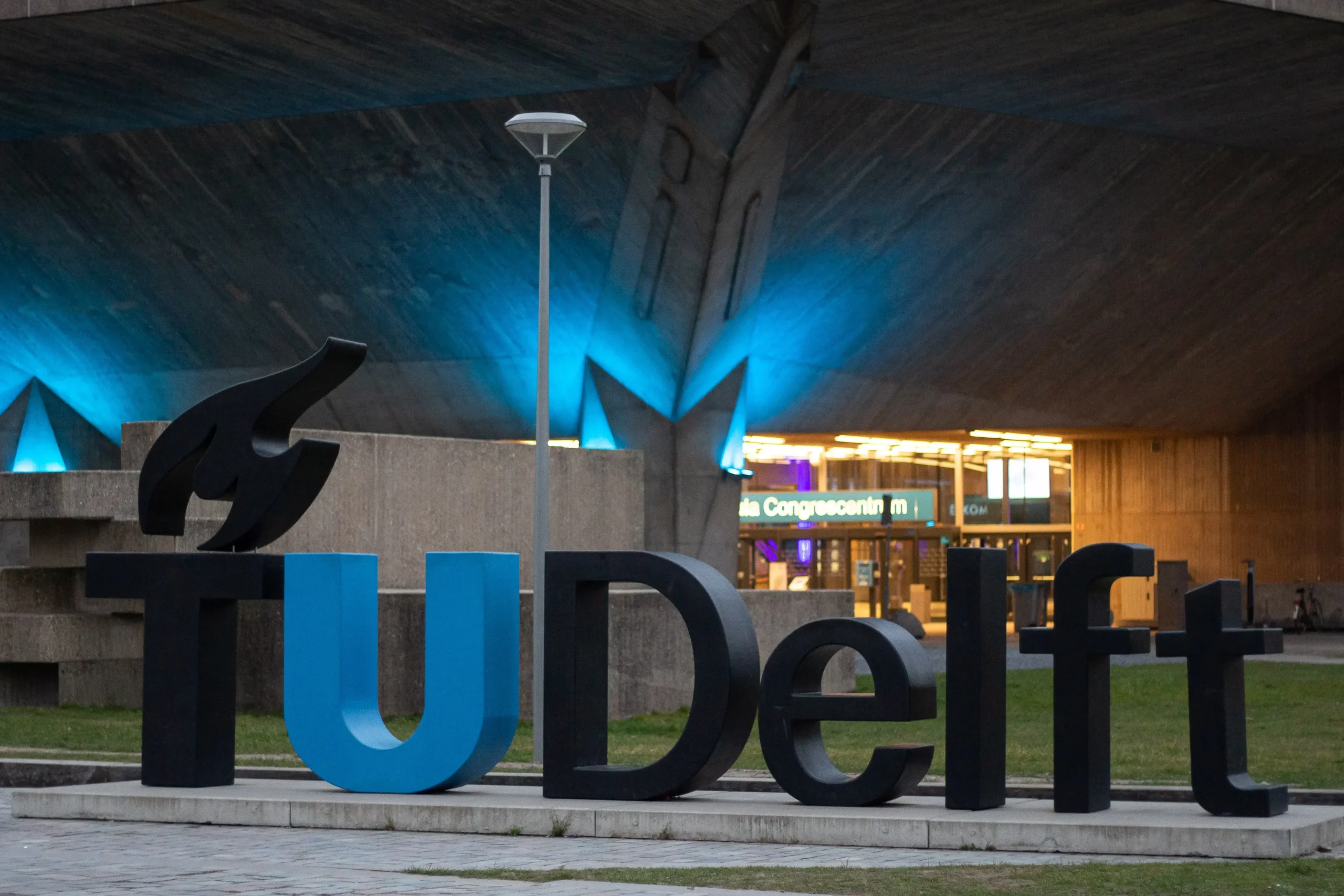
© Justyna Botor
© Justyna Botor
As of 1 January this year, the name of the Faculty of Mechanical, Maritime and Materials Engineering (3mE) has been changed to Mechanical Engineering, abbreviated to ME. The names of the three Bachelor’s programmes and eight Master’s programmes remain the same. The reason for the change was that the old name no longer correctly reflected what the faculty is about. New, fast-growing disciplines and research areas such as biomedical technology, energy transition and robotics are better reflected in the new name.
En route to Paris
In July, the Olympic Games will be held in Paris. TU Delft top athletes are ready to compete. What are their sporting and student lives like? In a series in Delta Willemijn Mulder, Justen Blok, Laila Youssifou, Ralf Rienks, Jan Driessen and Tessa Dullemans tell about their efforts and expectations.
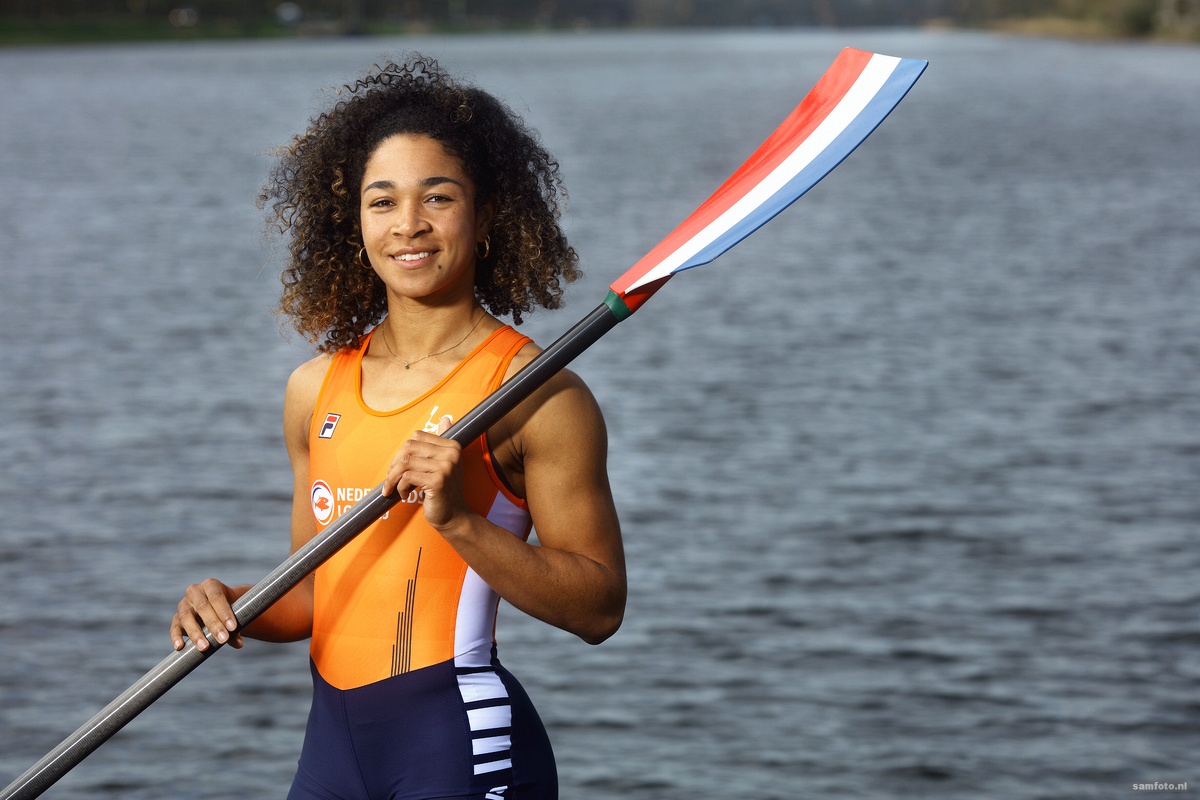
© Sam Rentmeester
Eco-runner
Eco-Runner causes amazement every year with a hydrogen vehicle that is incredibly fuel-efficient. The objective for this year is to cover a distance of 2,056 kilometres on 1.45 kilograms of hydrogen. Although this fuel consumption is 50 per cent higher than last year’s, Eco-Runner XIV does meet the RDW’s requirements for motorised road traffic. Think number plate, mirrors, larger windows, and more lights. The team aims to prove that the vehicle is fuel-efficient despite this fact, and will do so by attempting to set a world record in June. The Eco-Runner will then cover the Elfsteden route at a maximum speed of 65 kilometres per hour for three days and nights, totalling 2056 kilometres.
2.056 KM
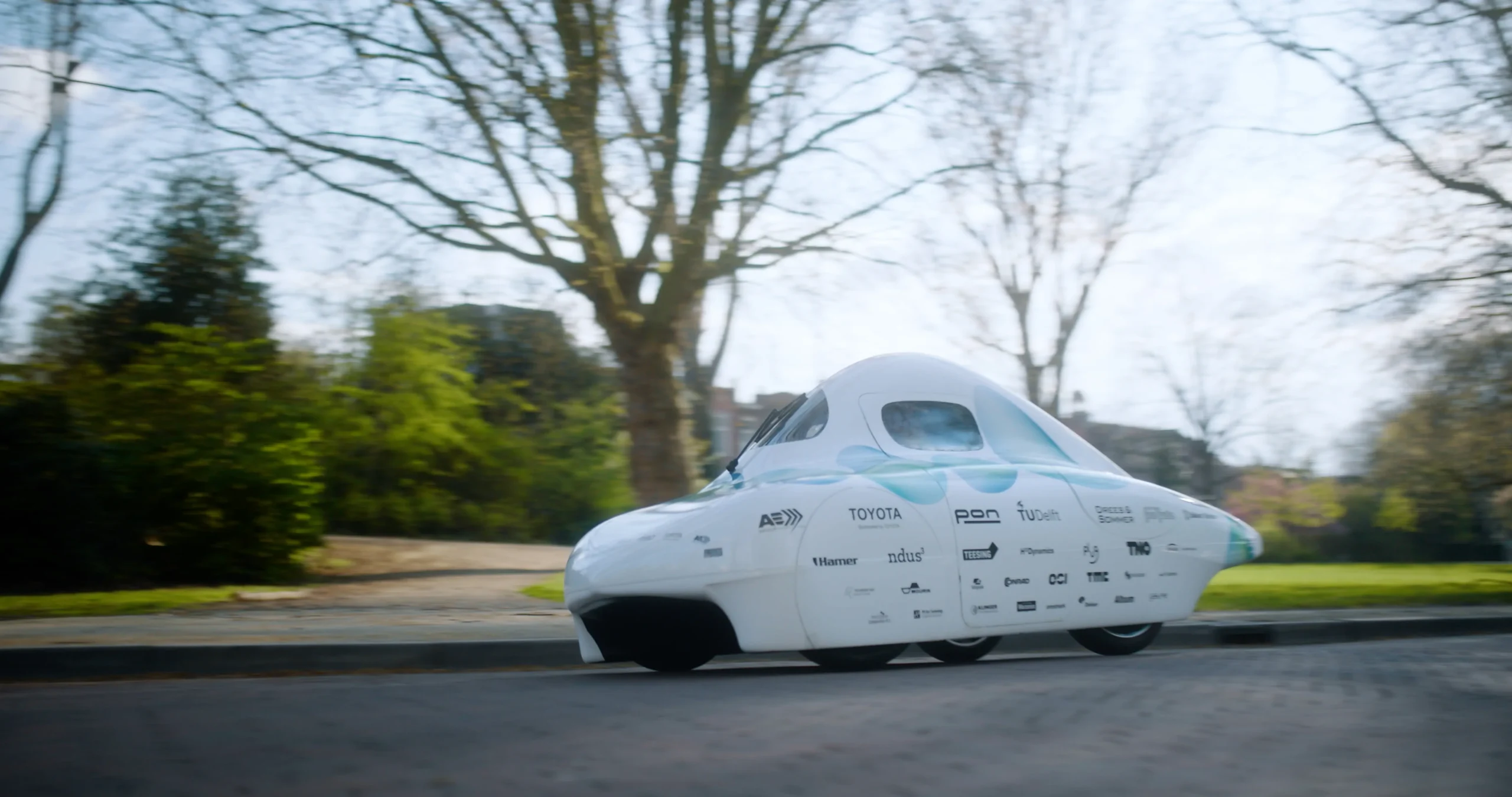
© Ecorunner
Oceanrace
After rowing nearly five thousand kilometres, the Delft student rowing team Out of the Blue arrived on the Caribbean island of Antigua on 18 January. They completed The World’s Toughest Row in 36 days, 11 hours and 5 minutes. The four rowers know one another from the Faculty of Aerospace Engineering. They raised over 32 thousand euros for their chosen causes Mind Us and Jigsaw, both of which are active in the area of mental health in young people. Ocean rowing is never a walk in the park, and this race was no exception. Many of the teams were plagued by seasickness and several of the boats capsized.
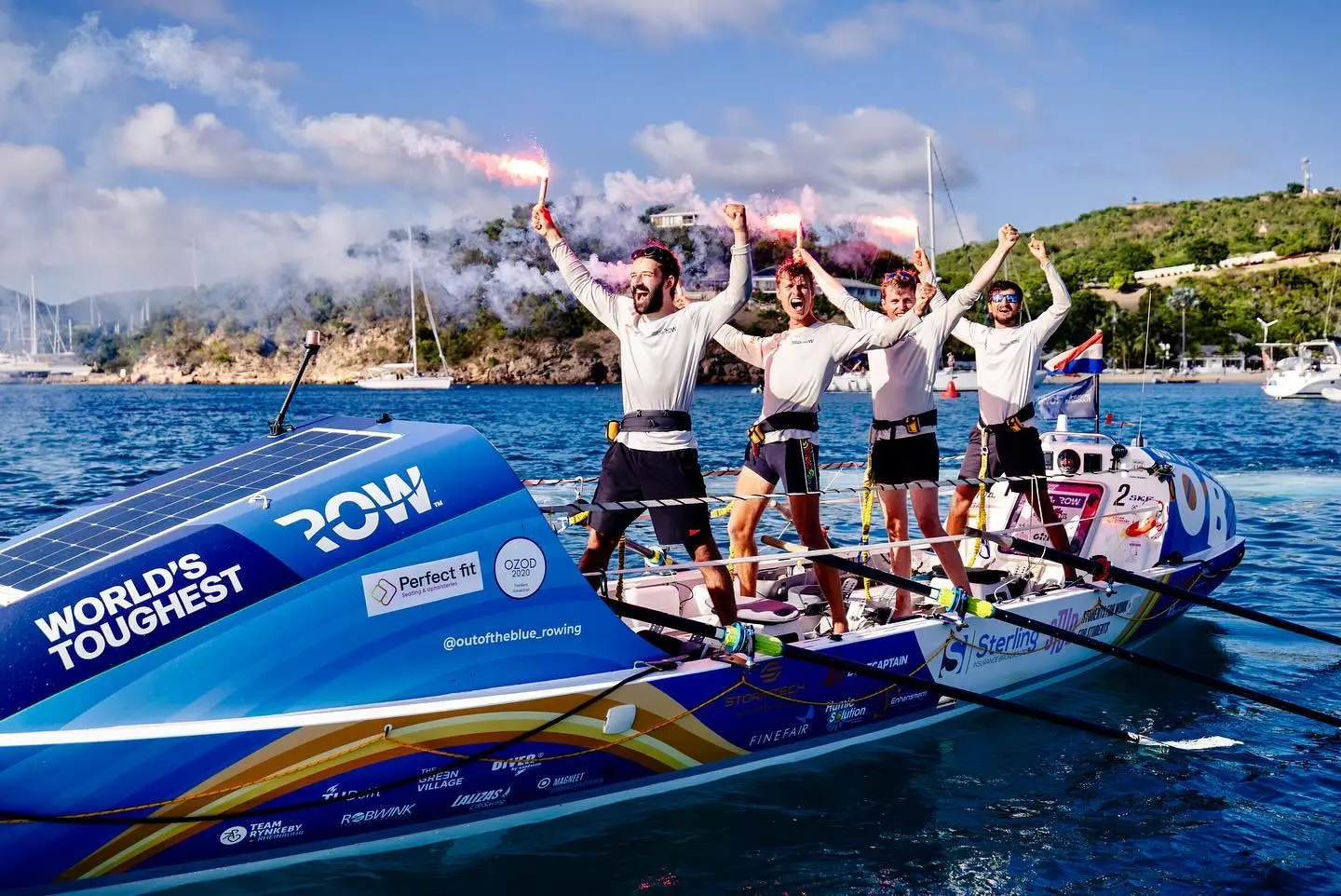
© Jaden Accord
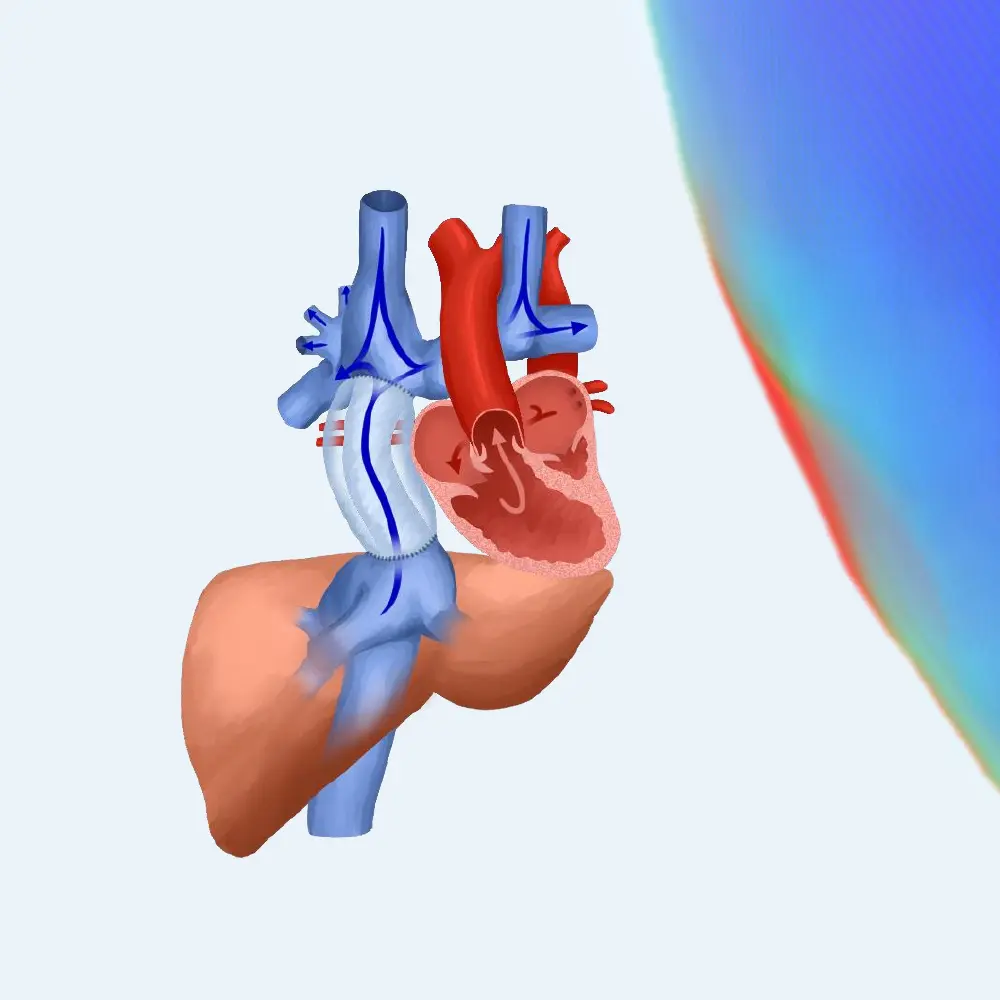
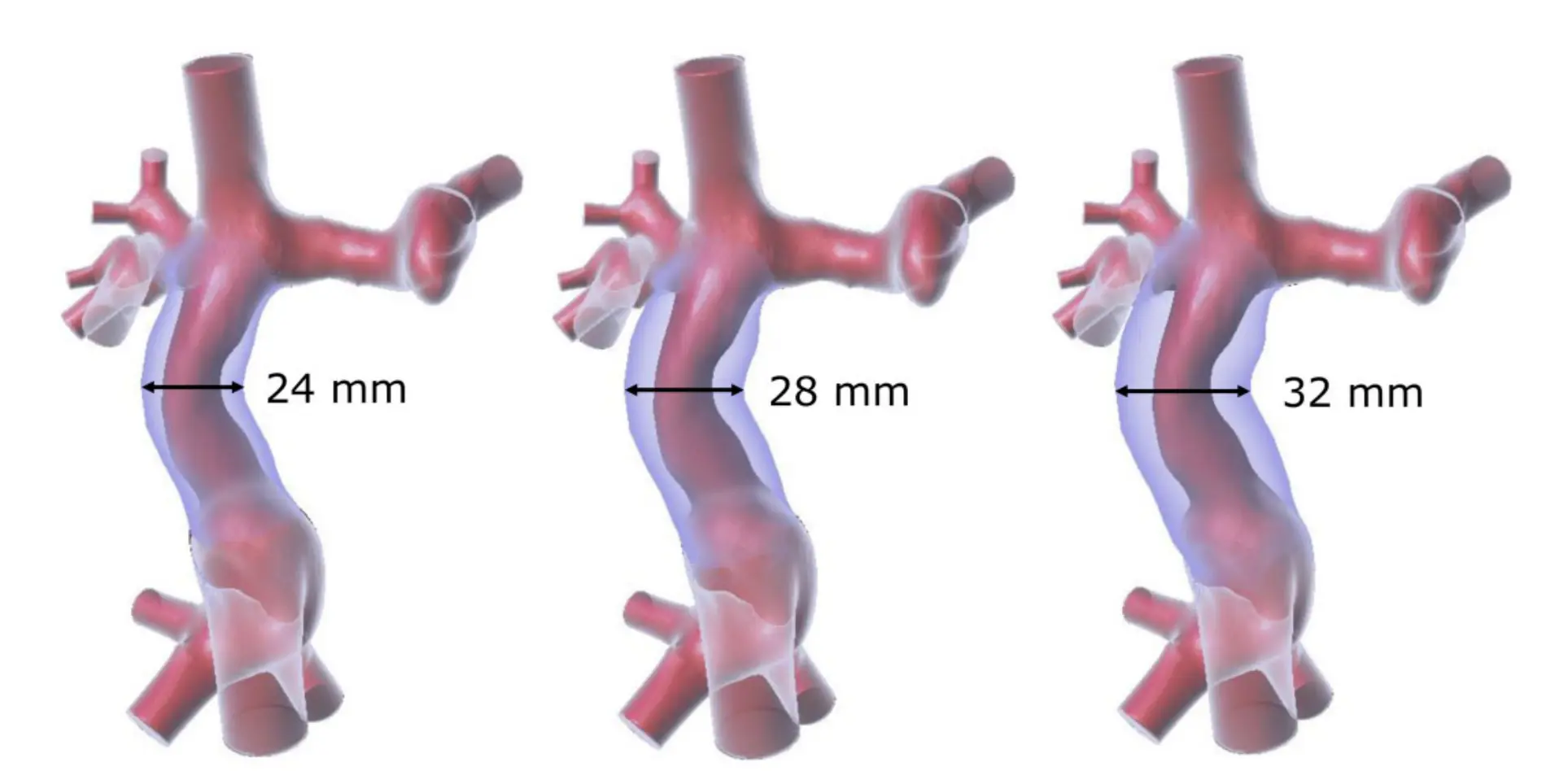
Bloodstream
Doctors have been repairing congenital heart defects in children with Gore-Tex tubes for 20 years. With these patients now reaching adulthood, the passage is proving to be too tight, Delft flow calculations show. Together with Dr Friso Rijnberg and other cardiologists and paediatric cardiologists from the Leiden University Medical Center (LUMC), flow expert Dr Sasa Kenjeres (Faculty of Applied Sciences) is looking into whether a larger tube diameter could reduce complications. They decided to perform ‘virtual surgery’. In computer simulations they replaced the tube with a wider one. Flow calculations showed a 40-65% improvement in flow. However, anatomically a wider tube does not fit a child’s heart well and the risk of the formation of blood clots increases, Rijnberg maintains. A wider tube is therefore not suitable for children.
Fridge
hack
Improve the insulation of your fridge with some styrofoam, slats, double-sided tape and magnets in just four hours. That is the idea behind the project Hack Your Fridge by alumni Ludo de Goeje and Alex Klootwijk (Industrial Design Engineering). Their idea put them among last year’s winners of Het beste idee van Gideon (Gideon’s Best Idea), a bottom-up movement to promote sustainability in construction. As De Goeje says: “A fridge is one of the few products for which it is more environmentally friendly to buy a new product than to use the old one for longer. With simple insulation, we aim to bring down the energy consumption of fridges, thereby saving energy and CO2.” Their website slijpstof.nl lists several ways in which you can insulate your fridge.
Try it yourself?
Watch the video or read the article
Vici grants
Of the 35 Vici grants that science funding body NWO has awarded to top researchers, three have gone to Delft researchers. A total of 337 applications had been submitted. Vici grants of up to €1.5 million are intended for ‘advanced’ scientists, and enable them to work with their research group for five years. Prof. Guido de Croon (Aerospace Engineering, AE) is developing a small drone with insect intelligence. Marios Kotsonis (also AE) is investigating how to reduce aerodynamic drag of aircraft wings and thus reduce emissions. Prof. Susan Steele-Dunne (Civil Engineering and Geosciences) is using the money to take measurements in forests using satellite radar in order to study ecosystem responses to climate change and human impact.
West
meets
east

Not infrequently, Western Europe falls short when it comes to knowledge of China and other Mandarin-speaking societies, observed Peter Gill, policy advisor on China at TU Delft. That is why he wrote the book West meets East, in which he compares China, Taiwan and Singapore with Germany, the Netherlands and Denmark. In concise, well-written texts and infographics, he guides readers through the most important companies, most pressing ecological challenges and biggest governance differences, among others. Students from TU Delft and other universities collaborated on the book.
© Robèrt Kroonen
The need for bridges will grow in the decades ahead. Bridge designers Ate Snijder (Architecture and the Built Environment) and Rob Nijsse (Civil Engineering and Geosciences) want to make bridge construction more sustainable, as well as circular and modular. In March, they presented their circular arch bridge, which forms the entrance to The Green Village, the field lab on the TU Delft campus. For the building blocks, they used three materials: geopolymer concrete (a mixture of alkaline, blast furnace slag and coal fly ash); circuton (gravel, sand and cement from concrete pulverised on site); and colourful bricks made of crushed brick and toilet bowls. The bridge will serve as a test for the next five years.
Nameplate
For the very first time, one of the halls in the EEMCS faculty bears the name of a woman. When electrical engineering student Merel Verhoef pointed out to the faculty that all of the rooms in the building had male names, a plan was devised to change this. A shortlist of eight female scientists who have contributed much to electrical engineering, mathematics or computer science was drawn up, and Johanna Manders was ultimately chosen. In 1916, she and Jeanne de Kroes were the first women to graduate in electrical engineering; Manders graduated cum laude. She obtained her PhD three years later and then spent 40 years working at the Patent Office, where she built a reputation as a nuclear physics expert. “If this nameplate can move even one girl to study electrical engineering,” says Verhoef, “it will have achieved its purpose.” In the faculty of EEMCS, 16.8 per cent of bachelor students and 18.2 per cent of Master’s students are women. University-wide, these percentages are around 30 per cent.
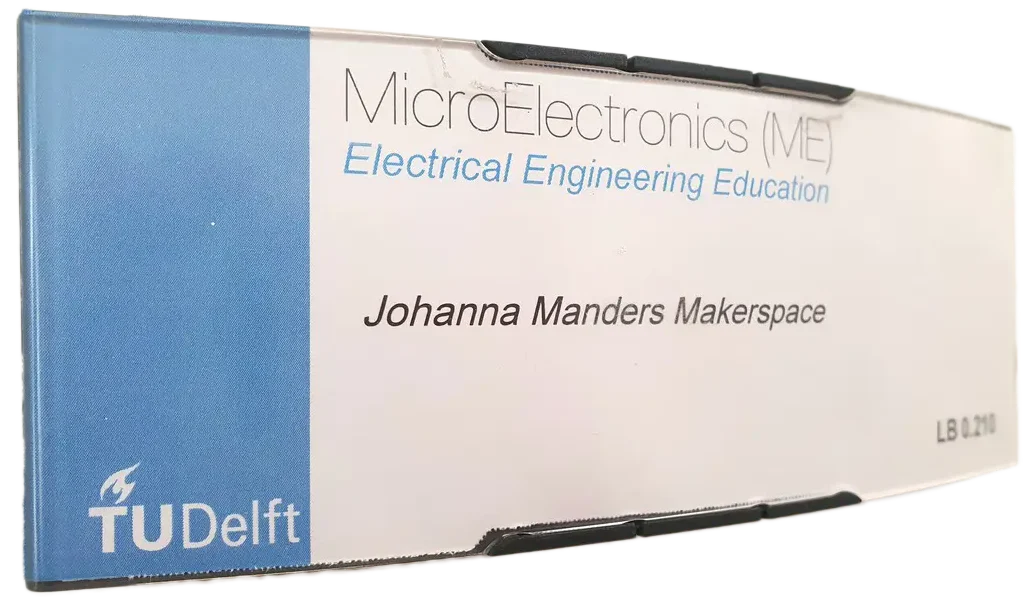
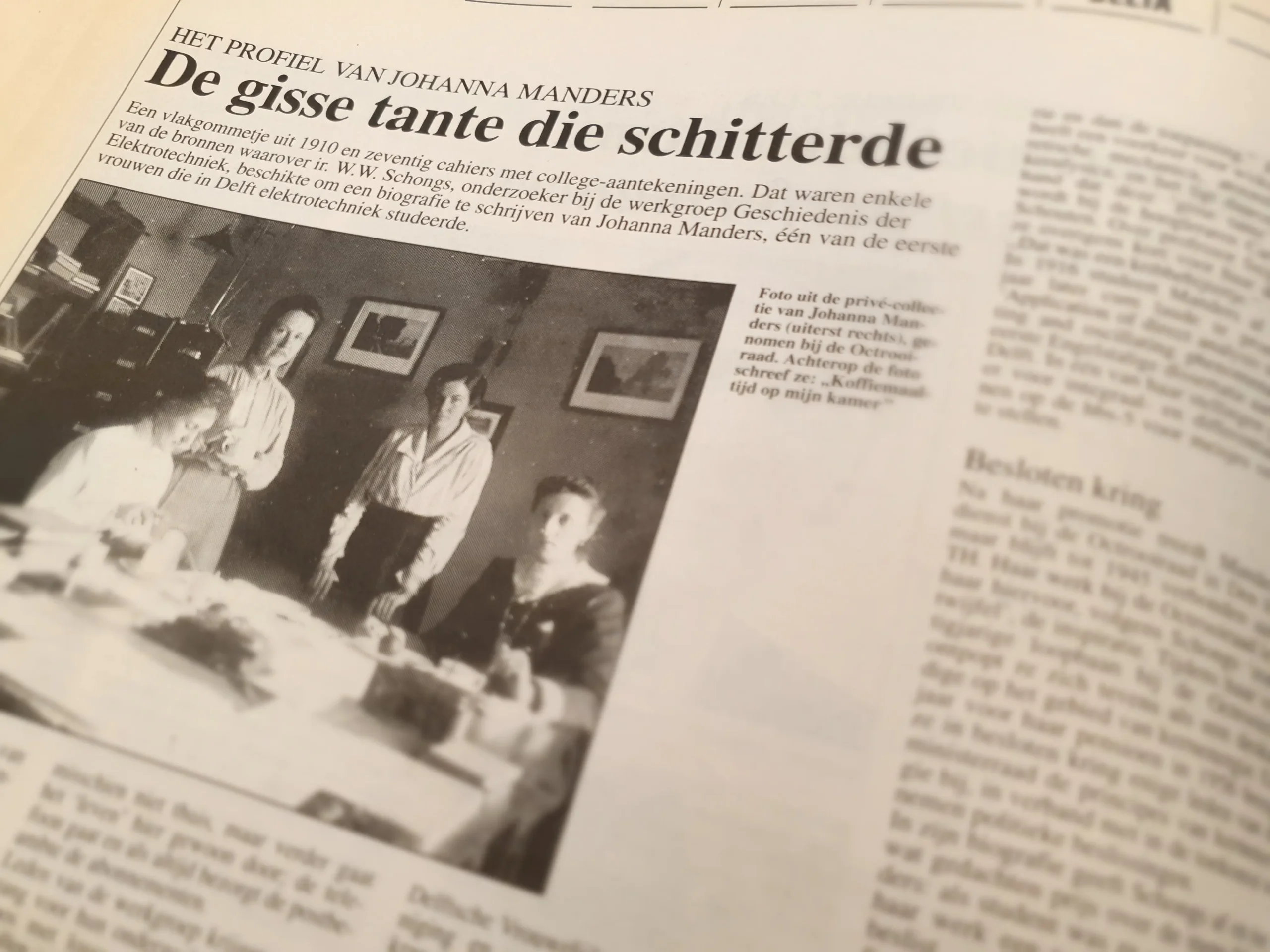
Award for Echo
© TU Delft
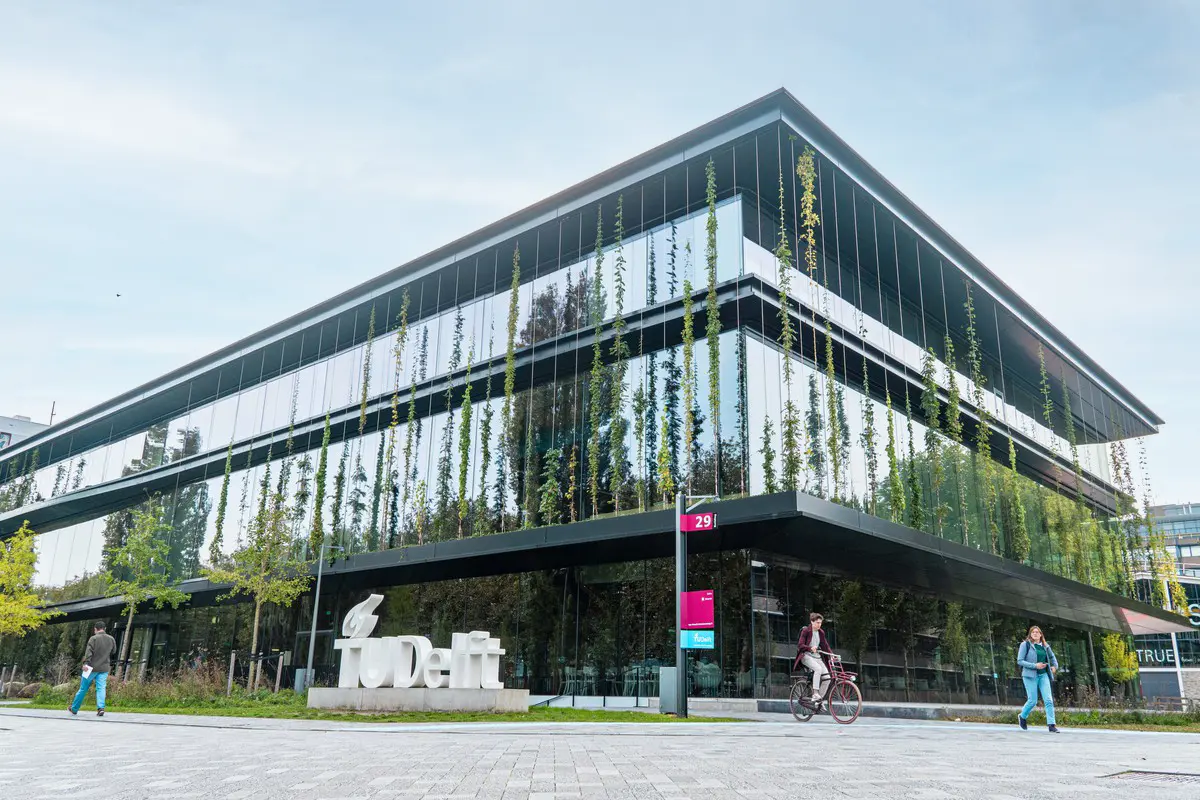
The Echo teaching building, which was inaugurated in May 2022, has won an architecture award, the Prix Versailles in the campus category. Criteria included innovation, creativity and ecological efficiency. According to the jury, the building stands out for its “architectural unity and overall coherence”. Echo was designed by UNStudio.
driving backwards
During the annual design competition in January, more than 700 first-year mechanical engineering students demonstrated how far they could get a cart go up a ramp. From the start line, it is exactly five metres to where the track curls up very steeply to almost vertical. There, the cart falls back and something needs to be done to power it back up the ramp. How do you do that without the help of electronic devices? And how do you get further back up the ramp than the starting point? Is it at all possible? Doesn’t that violate the law of conservation of energy? Most student teams used a spring under tension as an energy storage device. One team built in a flywheel that they revved up with a drill just before take-off.
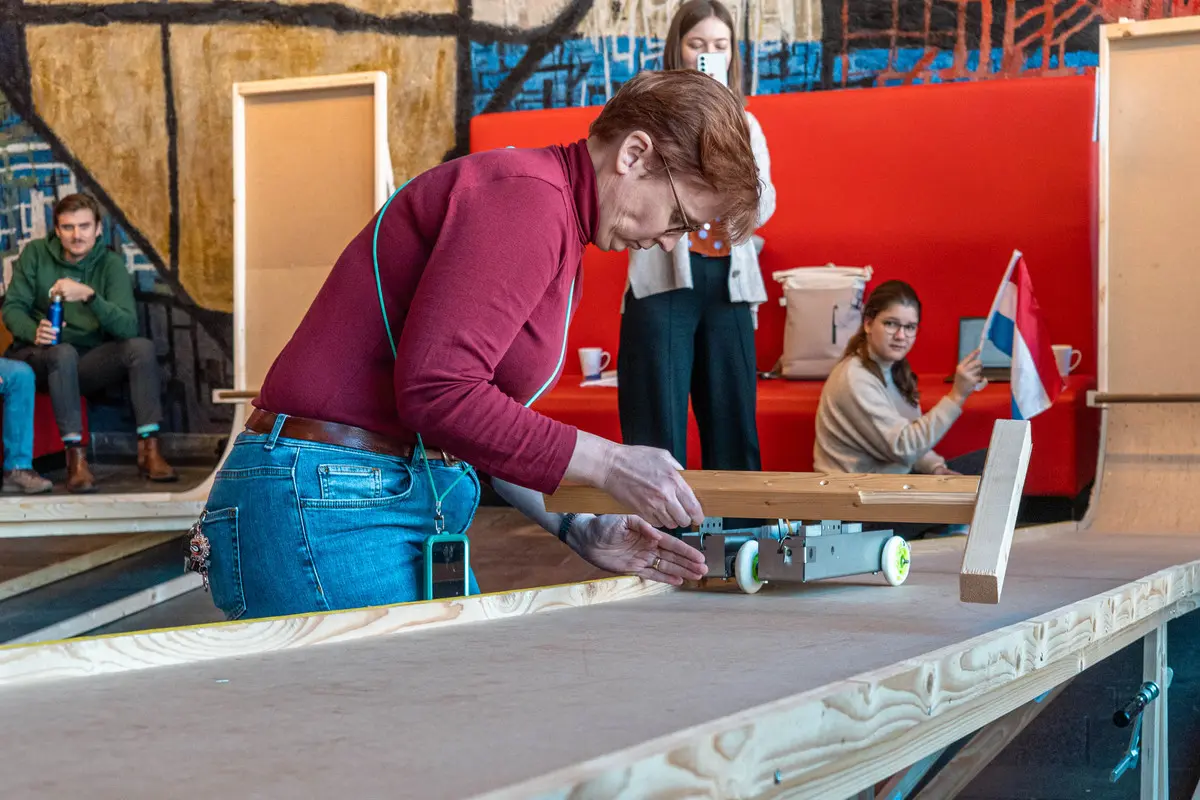
© Thijs van Reeuwijk
Teacher of the Year
Assistant Professor Alessandro Bombelli (Aerospace Engineering, AE) has been voted Teacher of the Year. Bombelli came to TU Delft in 2017, initially as a post-doc at the Faculty of Civil Engineering and Geosciences. He then joined AE, where his work includes research in collaboration with KLM Cargo. Bombelli teaches four subjects and likes to use memes and games during his lessons. “I always use these games to help students understand the material better and make them see the bigger picture. To get them to understand the reason for using a mathematical formula,” he says. “Teaching is immensely satisfying,” he continues. “Having said that, I could not do without science. Research keeps you on your toes.”
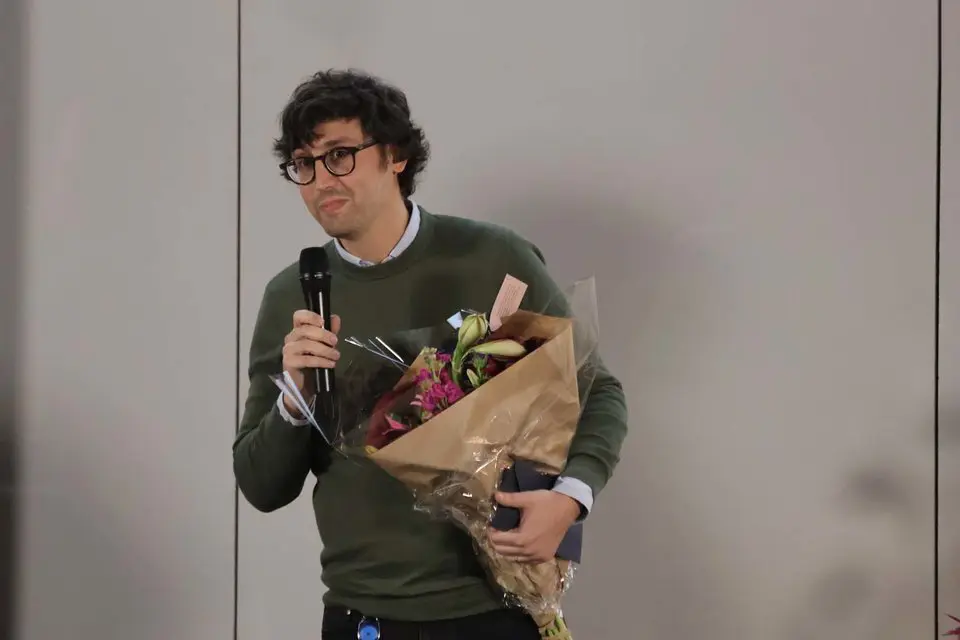
© Teaching Aacademy
Geothermal energy
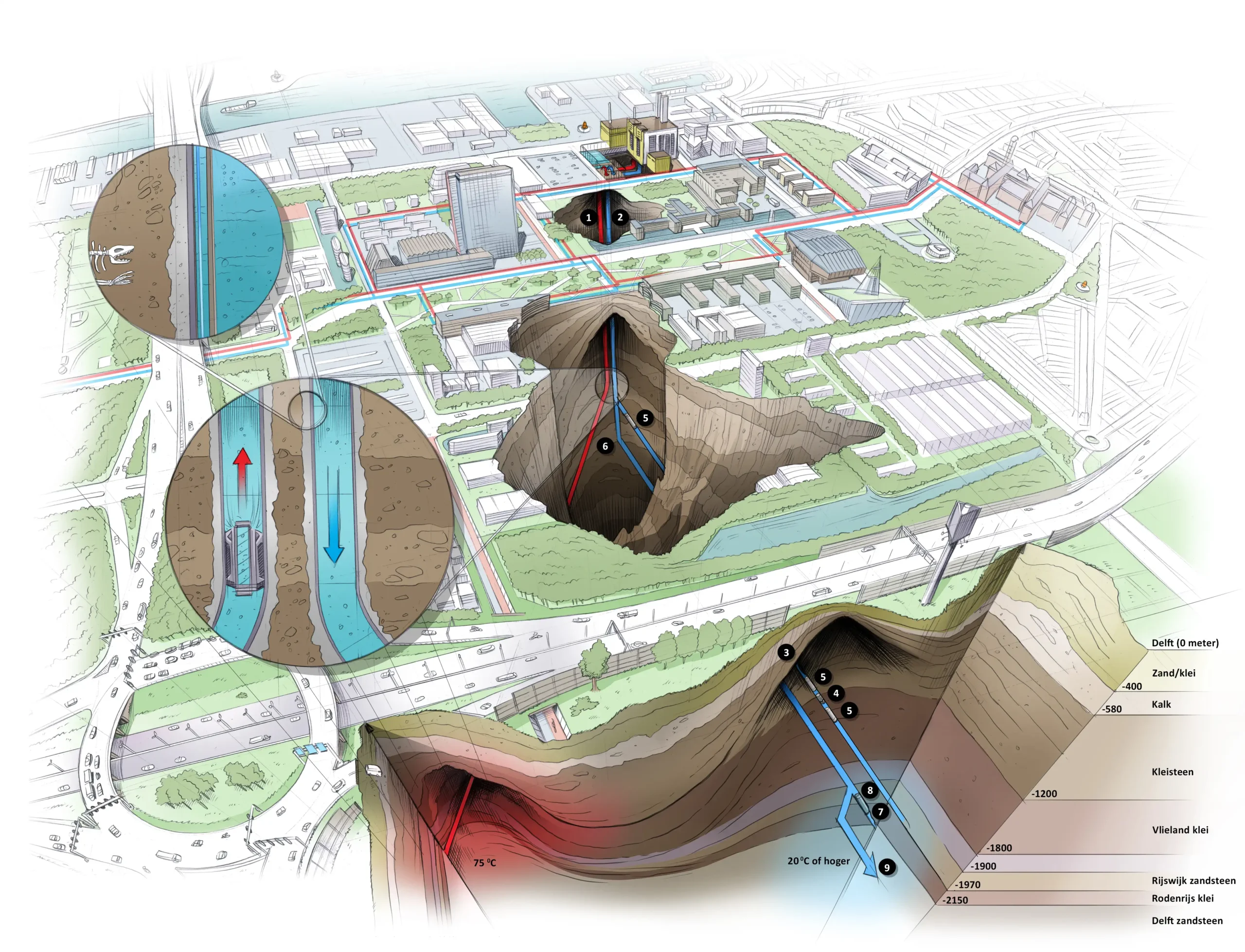
© Stephan Timmers
A project for tapping a geothermal source to provide heat to the campus and surrounding area was launched towards the end of 2022. Before extraction of geothermal energy at TU Delft is actually allowed to start, Geothermie Delft must ensure that a borehole that became unusable in October cannot cause problems. It must also investigate whether geothermal extraction could cause damage to TU Delft’s research reactor. Prof. Phil Vardon expects there to be no delay. “Injecting cooled water back into the subsurface can cause shrinkage. This results in stress, and the question is how this will be released.” Given the composition of the soil, this is probably done in a series of small slips. “These have a magnitude of 0 on the Richter scale.”
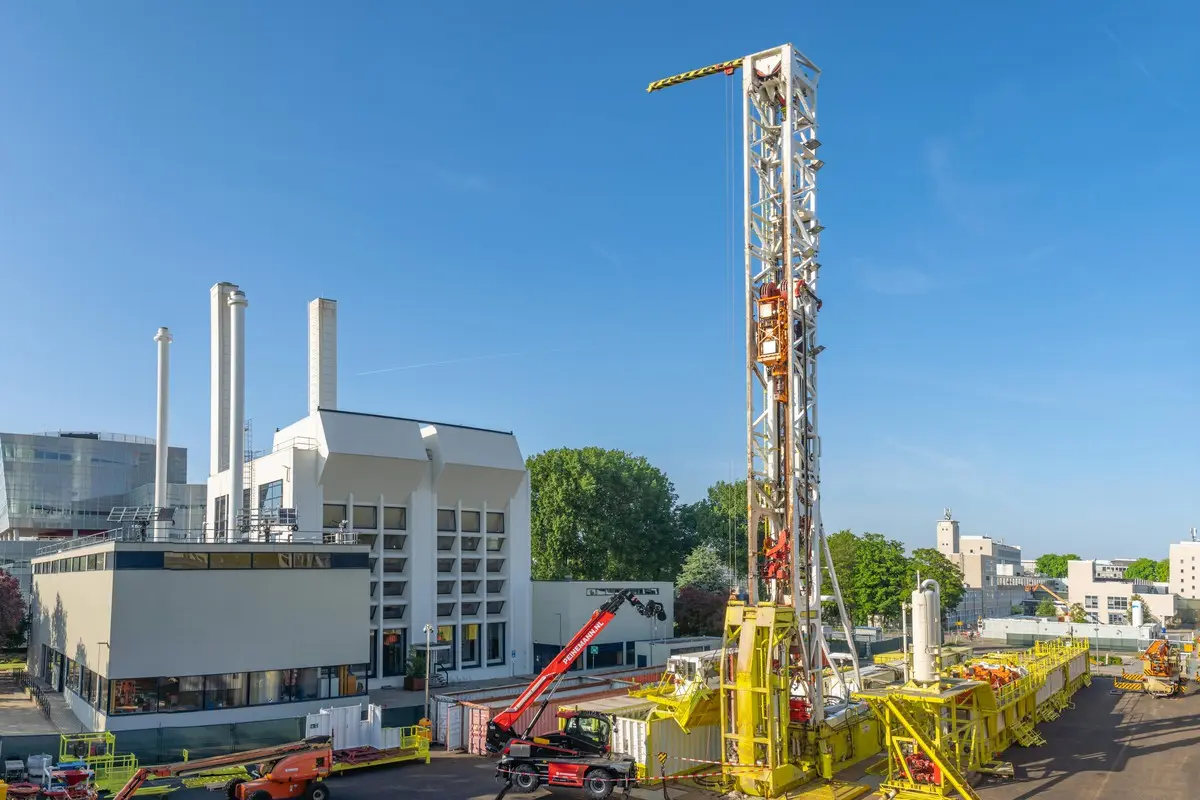
© Thijs van Reeuwijk

